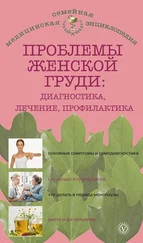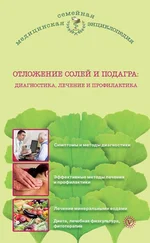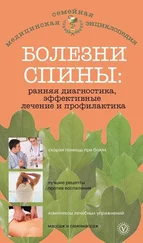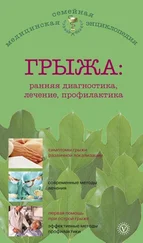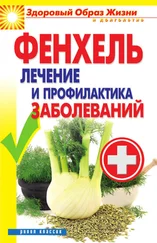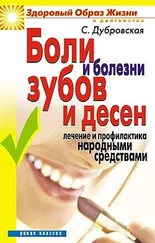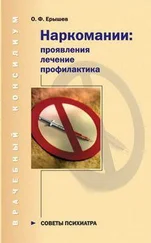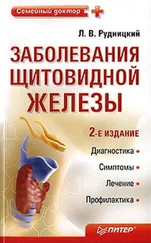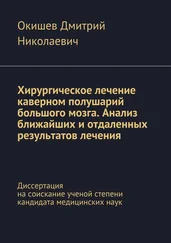Владимир Мартынов - СИБР (хирургическое лечение и профилактика)
Здесь есть возможность читать онлайн «Владимир Мартынов - СИБР (хирургическое лечение и профилактика)» — ознакомительный отрывок электронной книги совершенно бесплатно, а после прочтения отрывка купить полную версию. В некоторых случаях можно слушать аудио, скачать через торрент в формате fb2 и присутствует краткое содержание. ISBN: , Издательство: Литагент Литео, Жанр: Медицина, Медицина, Прочая научная литература, на русском языке. Описание произведения, (предисловие) а так же отзывы посетителей доступны на портале библиотеки ЛибКат.
- Название:СИБР (хирургическое лечение и профилактика)
- Автор:
- Издательство:Литагент Литео
- Жанр:
- Год:неизвестен
- ISBN:9785000717202
- Рейтинг книги:5 / 5. Голосов: 1
-
Избранное:Добавить в избранное
- Отзывы:
-
Ваша оценка:
- 100
- 1
- 2
- 3
- 4
- 5
СИБР (хирургическое лечение и профилактика): краткое содержание, описание и аннотация
Предлагаем к чтению аннотацию, описание, краткое содержание или предисловие (зависит от того, что написал сам автор книги «СИБР (хирургическое лечение и профилактика)»). Если вы не нашли необходимую информацию о книге — напишите в комментариях, мы постараемся отыскать её.
СИБР (хирургическое лечение и профилактика) — читать онлайн ознакомительный отрывок
Ниже представлен текст книги, разбитый по страницам. Система сохранения места последней прочитанной страницы, позволяет с удобством читать онлайн бесплатно книгу «СИБР (хирургическое лечение и профилактика)», без необходимости каждый раз заново искать на чём Вы остановились. Поставьте закладку, и сможете в любой момент перейти на страницу, на которой закончили чтение.
Интервал:
Закладка:
162. Iwasaki, A. Toll-like receptor control of the adaptive immune responses / A. Iwasaki, R. Medzhitov // Nat. Immunol. – 2004. – № 5. – P. 987–995.
163. Rakoff-Nahoum, S. Recognition of commensal microflora by toll-like receptors is required for intestinal homeostasis / S. RakoffNahoum, J. Paglino, F. Eslami-Varzaneh et al. // Cell. – 2004. – № 118. – P. 229–241.
164. Kawai, T. The roles of TLRs, RLRs and NLRs in pathogen recognition / T. Kawai, S. Akira // Int. Immunol. – 2009. – № 21. – P. 317–337.
165. Barnes, M. J. Regulatory T cells reinforce intestinal homeostasis M. J. Barnes, F. Powrie // Immunity. – 2009. – № 31. – P. 401–411.
166. Lee, Y. K. Has the microbiota played a critical role in the evolution of the adaptive immune system? / Y. K. Lee, S. K. Mazmanian // Science. – 2010. – № 330. – P. 1768–1773.
167. Josefowicz, S. Z. Extrathymically generated regulatory T cells control mucosal TH2 inflammation / S. Z. Josefowicz, R. E. Niec, H. Y. Kim et al. // Nature. – 2012. – № 482. – P. 395–399.
168. Round, J. L. The gut microbiota shapes intestinal immune responses during health and disease / J. L. Round, S. K. Mazmanian // Nat. Rev. Immunol. – 2009. – № 9. – P. 313–323.
169. Round, J. L. Inducible Foxp 3+ regulatory T-cell development by a commensal bacterium of the intestinal microbiota / J. L. Round, S. K. Mazmanian // Proc. Natl. Acad. Sci USA. – 2010. – № 107. – P. 12204–12209.
170. O’Mahony, C. Commensal-induced regulatory T cells mediate protection against pathogen-stimulated NF-jB activation / C. O’Mahony, P. Scully, D. O’Mahony et al. // PLoS Pathog. – 2008. – № 4. – P. 1000– 1012.
171. Atarashi K, Tanoue T, Shima Tet al. Induction of colonic regulatory T cells by indigenousClostridiumspecies.Science2011; № 331:337–41.
172. Ivanov, I. I. Induction of intestinal Th17 cells by segmented filamentous bacteria / K. Atarashi, T. Tanoue, T. Shima et al. // Cell. – 2009. – № 139. – P. 485–498.
173. Atarashi, K. ATP drives lamina propria TH17 cell differentiation / K. Atarashi, J. Nishimura, T. Shima et al. // Nature. – 2008. – № 455. – P. 808–812.
174. Fukuda, S. Bifidobacteria can protect from enteropathogenic infection through production of acetate / S. Fukuda, H. Toh, K. Hase et al. // Nature. – 2011. – № 469. – P. 543–547.
175. Wong, J. M. Colonic health: fermentation and short chain fatty acids / J. M. Wong, R. de Souza, C. W. Kendall // J. Clin. Gastroenterol. – 2006. – № 40. – P. 235–243.
176. Maslowski, K. M. Regulation of inflammatory responses by gut microbiota and chemoattractant receptor GPR43 / K. M. Maslowski, A. T. Vieira, A. Ng et al. // Nature. – 2009. – № 461. – P. 1282– 1286.
177. Barthel, M. Pretreatment of mice with streptomycin provides a Salmonella entericaserovar Typhimurium colitis model that allows analysis of both pathogen and host / M. Barthel, S. Hapfelmeier, L. Quintanilla-Martinez et al. // Infect. Immun. – 2003. – № 71. – P. 2839–2858.
178. Higgins, L. M. Role of bacterial intimin in colonic hyperplasia and inflammation / L. M. Higgins, G. Frankel, I. Connerton et al. // Science. – 1999. – № 285. – P. 588–591.
179. Geddes, K. Identification of an innate T helper type 17 response to intestinal bacterial pathogens / K. Geddes, S. J. Rubino, J. G. Magalhaes // Get. al Nat. Med. – 2011. – № 17. – P. 837– 844.
180. Lee, S. J. Temporal expression of bacterial proteins instructs host CD4 T cell expansion and Th17 development / S. J. Lee, J. B. McLachlan, J. R. Kurtz // PLoS Pathog. – 2012. – № 8. – P. 102–119.
181. Broz, P. Molecular mechanisms of inflammasome activation during microbial. infections / P. Broz, D. M. Monack / Immunol. Rev. 2011. – № 243. – P. 174–190.
182. Lupp, C. Host-mediated inflammation disrupts the intestinal microbiota and promotes the overgrowth of Enterobacteriaceae / C. Lupp, M. L. Robertson, M. E. Wickham et al. // Cell. Host. Microbe. – 2007. – № 2. – P. 119–129.
183. Stecher, B. Salmonella enterica serovar typhimurium exploits inflammation to compete with the intestinal microbiota / B. Stecher, R. Robbiani, A. W. Walker et al. // PLoS Biol. – 2007. – № 5. – P. 2177–2189.
184. Finlay, B. B. Salmonellav interactions with host cells: in vitro to in vivo / B. B. Finlay, J. H. Brumell // Philos. Trans R. Soc. Lond. Biol. Sci. – 2000. – № 355. – P. 623–631.
185. Raffatellu, M. Lipocalin-2 resistance confers an advantage to Salmonella enterica serotype Typhimurium for growth and survival in the inflamed intestine / M. Raffatellu, M. D. George, Y. Akiyama et al. // Cell. Host. Microbe. – 2009. – № 5. – P. 476–486.
186. Stelter, C. Salmonellainduced mucosal lectin RegIIIbkills competing gut microbiota / C. Stelter, R. Kappeli, C. Konig et al. // PLoS ONE. – 2011. – № 6. – P. 207–249.
187. Liu, J. Z. Zinc sequestration by the neutrophil protein calprotectin enhances salmonella growth in the inflamed gut / J. Z. Liu, S. Jellbauer, A. J. Poe et al. // Cell. Host. Microbe. – 2012. – № 11. – P. 227–239.
188. Thiennimitr, P. Intestinal inflammation allows Salmonella to use ethanolamine to compete with the microbiota / P. Thiennimitr, S. E. Winter, M. G. Winter et al. // Proc. Natl. Acad. Sci. USA. – 2011. – № 108. – P. 174–185.
189. Winter, S. E. Gut inflammation provides a respiratory electron acceptor forSalmonella / S. E. Winter, P. Thiennimitr, M. G. Winter et al. // Nature. – 2010. – № 467. – P. 426–429.
190. Lawley, T. D. Host transmission ofSalmonella entericaserovar Typhimurium is controlled by virulence factors and indigenous intestinal microbiota / T. D. Lawley, D. M. Bouley, Y. E. Hoy et al. // Infect. Immun. – 2008. – № 76. – P. 403–416.
191. Wickham, M. E. Virulence is positively selected by transmission success between mammalian hosts / M. E. Wickham, N. F. Brown, E. C. Boyle et al. // Curr. Biol. – 2007. – № 17. – P. 783–788.
192. Antonopoulos, D. A. Reproducible community dynamics of the gastrointestinal microbiota following antibiotic perturbation / D. A. Antonopoulos, S. M. Huse, H. G. Morrison // Infect. Immun. – 2009. – № 77. – P. 2367–2375.
193. Brandl, K. Vancomycin-resistant enterococci exploit antibiotic-induced innate immune deficits / K. Brandl, G. Plitas, C. N. Mihu et al. // Nature. – 2008. – № 455. – P. 804–807.
194. Bartlett, JG. Narrative review: the new epidemic of Clostridium difficile-associated enteric disease / J. G. Bartlett // Ann. Intern. Med. – 2006. – № 145. – P. 758–764.
195. Rupnik, M. Clostridium difficileinfection: new developments in epidemiology and pathogenesis / M. Rupnik, M. H. Wilcox, D. N. Gerding // Nat. Rev. Microbiol. – 2009. – № 7. – P. 526–536.
196. Shen A. Clostridium difficiletoxins: mediators of inflammation? / A. Shen // J. Innate Immun. – 2012. – № 4. – P. 149–158.
197. Lamont, J. T. How bacterial enterotoxins work: insights from in vivo studies / J. T. Lamont, E. Theodore, A. Woodward // Trans. Am. Clin. Climatol. Assoc. – 2002. – № 113. – P. 167–180; discussion 80–1.
198. Buffie, C. G. Profound alterations of intestinal microbiota following a single dose of clindamycin results in sustained susceptibility to Clostridium difficile-induced colitis / C. G. Buffie, I. Jarchum, M. Equinda et al. // Infect. Immun. – 2012. – № 80. – P. 62–73.
199. Chang, J. Y. Decreased diversity of the fecal Microbiome in recurrent Clostridium difficile-associated diarrhea / J. Y. Chang, D. A. Antonopoulos, A. Kalra et al. // J. Infect. Dis. – 2008. – № 197. – P. 435–438
Читать дальшеИнтервал:
Закладка:
Похожие книги на «СИБР (хирургическое лечение и профилактика)»
Представляем Вашему вниманию похожие книги на «СИБР (хирургическое лечение и профилактика)» списком для выбора. Мы отобрали схожую по названию и смыслу литературу в надежде предоставить читателям больше вариантов отыскать новые, интересные, ещё непрочитанные произведения.
Обсуждение, отзывы о книге «СИБР (хирургическое лечение и профилактика)» и просто собственные мнения читателей. Оставьте ваши комментарии, напишите, что Вы думаете о произведении, его смысле или главных героях. Укажите что конкретно понравилось, а что нет, и почему Вы так считаете.

